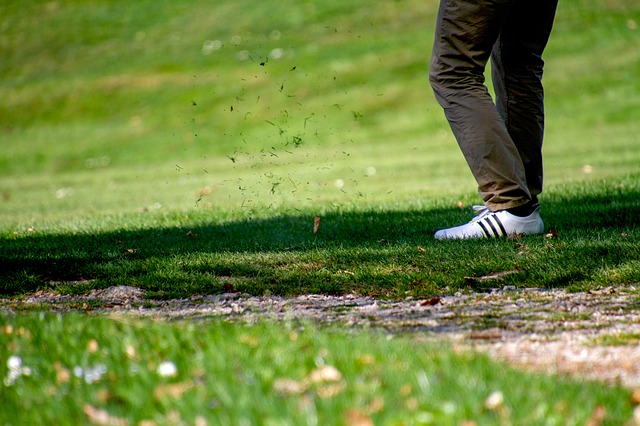Michael J. Hurdzan, Golf and Law. Golf Course Safety, Security and Risk Management. Edited by Ron Whitten. Hurdzan Golf Publications, Columbus, Ohio. Hardcover, May 2018, available on Amazon, $65.00. Reviewed by John Strawn, Director, GGA Partners
Michael Hurdzan has designed some of the world’s best golf courses, among them Erin Hills, the US Open venue in Wisconsin, and two of Canada’s most acclaimed courses, The Devil’s Paintbrush and The Devil’s Pulpit. His impressive portfolio of course designs nestles among a broader range of accomplishments. Hurdzan has a PhD in environmental plant physiology; following active duty in the US Army, he served in a special forces reserve unit for thirty years, retiring as a Colonel. Now a Fellow in the American Society of Golf Course Architects, he was ASGCA president in 1984-85. In partnership with his son, Chris Hurdzan, he leads restorations and renovations of classic courses, such as The Ottawa Hunt and Golf Club, Scioto Country Club in his native Columbus, Ohio, and Vermont’s Burlington Country Club.
Hurdzan is outspoken advocate for sustainable golf development. He’s delivered hundreds of speeches on best practices in golf operations, highlighting the impact course design has on maintenance. He’s one of the world’s leading authorities on golf’s environmental impacts. He’s written a series of books, including a comprehensive treatise entitled Golf Course Architecture, familiarly known as “the modern bible of golf course design.”
Now, with his seventh book, Hurdzan has turned his attention to the intersection of golf and the law, striding into a contentious arena where few non-lawyers have dared to tread. “I have been shocked,” Hurdzan writes in the introduction to Golf and Law, “that the golf industry, in general, has been so slow or inactive in trying to educate golfers and course operators to make golf and golf courses less hazardous.”
Though not a lawyer, Hurdzan has testified in numerous lawsuits, acquiring knowledge of golf’s legal quandaries firsthand, often sitting in the hot seat as an expert witness subject to cross examination. He’s testified on behalf of both defendants and plaintiffs. Golf and Law examines some of those cases, drawing valuable lessons for course managers, superintendents, and private club boards on how to assess and ameliorate risk.
Golf and Law was edited by Ron Whitten, a writer and former prosecutor who abandoned the courtroom years ago to take on the role of golf course architectural editor at Golf Digest, where he established himself as an authoritative voice on design. Whitten also collaborated with Hurdzan on the early stages of the design of Erin Hills.
But it’s Hurdzan’s voice we hear on the pages of Golf and Law, a clarion call reflecting the authority and presence that’s given his courthouse testimony such persuasive authenticity. When you’ve learned to give orders that may have deadly consequences, you don’t take risk lightly.
Hurdzan’s book advises course managers and club members to forestall risk by undertaking a prudent, ongoing and realistic assessments of any potential hazards they can identify—and we’re not talking about bunkers here, but rather lake edges, aging trees, blind shots and steep slopes. He makes a case for modest interventions, above all the use of simple warning signs, but makes it clear that the strongest protection against risk lies in good planning and design.
The number of pages Hurdzan devotes to golf car issues—and he prefers “car” to “cart” because the former implies greater operational risk, and the whole point of Golf and Law is to provide guidance on managing risk on golf courses—may not be surprising, given that more than 15,000 golf car accidents are reported every year. Although he doesn’t state what proportion of golf-related lawsuits involve cars, from the cases he presents the impression is that cars are golf’s greatest danger.
As in his previous work, Hurdzan’s goal in writing Golf and Law is to make the golf industry better–a safer place for golfers and staff alike, where everyone is alert to the risks inherent in balls traveling at skull-cracking speeds and cars are driven with the risks of operating them clearly in mind. This book belongs on every prudent club manager and superintendent’s shelf.





